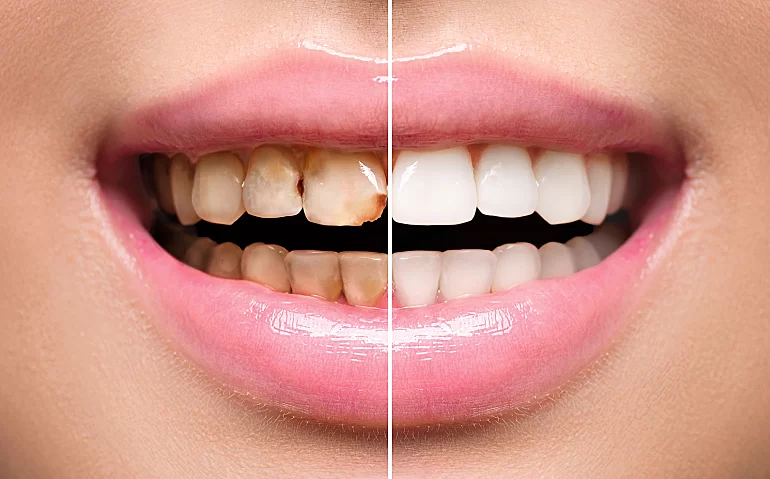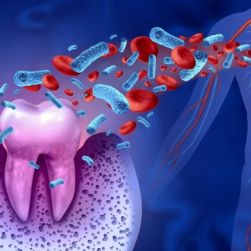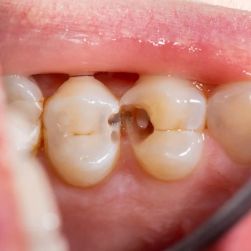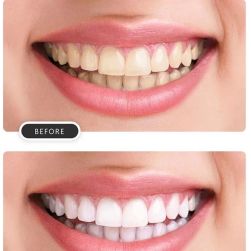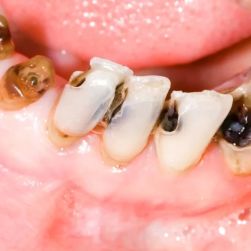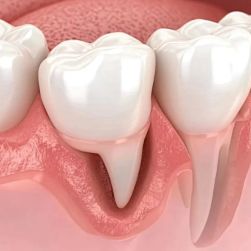How to Reverse Gum Disease Before It Gets Serious: Early Treatment and Prevention
- Understanding Gum Disease
- Early Signs and Symptoms of Gum Disease
- How to Reverse Gum Disease Before It Gets Serious
- Effective Prevention Tips for Gum Disease
- Real-Life Examples and Stories
Understanding Gum Disease
Gum disease, also known as periodontal disease, is a common oral health issue that affects the gums and the supporting structures of the teeth. It starts as gingivitis, a mild form of gum disease that is usually reversible with good oral hygiene practices. However, if left untreated, gingivitis can progress into more severe periodontal disease, which can result in tooth loss. Understanding the stages of gum disease and recognizing the signs early is crucial for preventing it from becoming a serious issue.
Early Signs and Symptoms of Gum Disease
Gum disease often develops slowly and may not show obvious symptoms in its early stages. However, being aware of the common signs can help you detect it before it worsens. Here are some early symptoms:
1. Red, Swollen, or Bleeding Gums
One of the earliest signs of gum disease is redness or swelling of the gums. You may also notice that your gums bleed when you brush or floss. These are signs of gingivitis, which is the first stage of gum disease.
2. Bad Breath
Persistent bad breath, or halitosis, can be a sign of gum disease. Bacteria that accumulate in the mouth can cause foul-smelling breath, especially if gum disease is present.
3. Receding Gums
If your gums start to recede (pull away) from your teeth, exposing more of the tooth’s surface, it could be a sign of gum disease. This recession can cause your teeth to appear longer than usual.
4. Tender or Painful Gums
Gum disease can cause tenderness or discomfort in the gums, especially when brushing or eating. If you notice any pain, it’s a good idea to consult a dentist.
How to Reverse Gum Disease Before It Gets Serious
Reversing gum disease before it becomes serious is possible, especially if caught early. Here are some practical steps to take:
1. Improve Your Oral Hygiene
The most effective way to reverse gum disease is to maintain excellent oral hygiene. Brush your teeth at least twice a day with a fluoride toothpaste, and make sure to floss daily. This helps remove plaque buildup, which is a major cause of gum disease. Using an antibacterial mouthwash can also help reduce bacteria in the mouth.
2. Regular Dental Checkups
Regular visits to your dentist are essential for catching early signs of gum disease. During your checkups, the dentist can professionally clean your teeth to remove plaque and tartar that cannot be removed with regular brushing. They may also recommend treatments like scaling and root planing if your gum disease has progressed beyond gingivitis.
3. Quit Smoking
Smoking is a major risk factor for gum disease as it weakens your immune system, making it harder for your gums to heal. If you smoke, quitting can significantly improve your gum health and help reverse the effects of early-stage gum disease.
4. Use a Soft-Bristled Toothbrush
Using a hard-bristled toothbrush or brushing too aggressively can damage your gums and contribute to gum recession. Switch to a soft-bristled toothbrush to gently clean your teeth without irritating your gums.
5. Eat a Healthy Diet
A balanced diet rich in vitamins and minerals, especially vitamin C, can help your gums stay healthy and support the healing process. Foods like citrus fruits, leafy greens, and nuts can help strengthen gum tissue and improve overall oral health.
Effective Prevention Tips for Gum Disease
Preventing gum disease is far easier than treating it. Here are some important steps to ensure your gums stay healthy:
1. Brush and Floss Daily
Brushing twice a day and flossing once a day is the most effective way to prevent gum disease. Be sure to brush for at least two minutes and pay attention to the gum line where plaque often accumulates.
2. Avoid Excess Sugar
Excessive sugar consumption can lead to plaque buildup and increase your risk of gum disease. Try to limit sugary snacks and drinks, especially those that can stick to your teeth.
3. Stay Hydrated
Drinking plenty of water helps wash away food particles and bacteria from your mouth. Staying hydrated also promotes saliva production, which plays a key role in neutralizing acids and protecting your gums.
4. Manage Stress
Stress can contribute to gum disease by weakening your immune system and making it harder for your body to fight off infection. Managing stress through relaxation techniques like yoga or meditation can help keep your gums healthy.
Real-Life Examples and Stories
Many people have successfully reversed gum disease by taking early action. For instance, Sarah, a 32-year-old woman, noticed her gums were bleeding while brushing her teeth. After researching the symptoms, she realized it could be early gum disease. Sarah started brushing more carefully, flossed regularly, and visited her dentist for a deep cleaning. By the time she had her next checkup, her gums had improved significantly, and she avoided more serious treatments.
John, a 45-year-old man, had been struggling with gum disease for years. He had avoided the dentist out of fear but finally decided to get help when his gums started to recede. His dentist recommended a professional cleaning and gave him a personalized oral care plan. Within a few months of following the plan, John’s gum health improved, and he was able to avoid the need for more invasive procedures like surgery.
These stories show that with timely intervention and the right dental habits, it’s possible to reverse gum disease and maintain a healthy smile for life.
If you’re concerned about your gum health, don’t wait until the problem gets serious. Start by adopting good oral hygiene practices and schedule a visit to your dentist. Your dentist can help you develop a treatment plan to reverse gum disease before it progresses and safeguard your smile for years to come.

